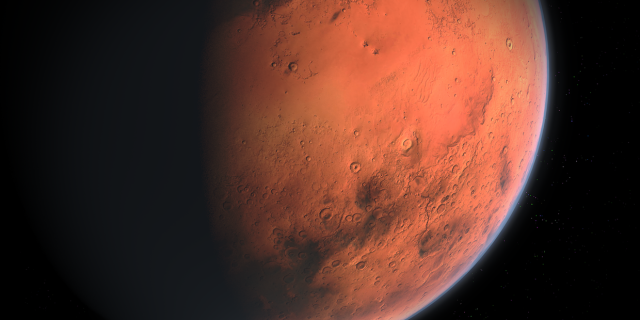We are talking about the unrealized NASA PHLOTE project (Phobos L1 Operational Tether Experiment)
SAMARA, July 20. /tass/. A student of Samara University named after Korolev Daria Neryadovskaya mathematically justified the possibility of using a "space elevator" to conduct remote studies of the Mars satellite Phobos, a university student told TASS on Thursday. We are talking about a technology in which scientific equipment is lowered on a cable from a space probe located above the surface of a satellite.
"The use of cable systems for the study and exploration of the planets of the Solar System and their satellites is one of the urgent tasks of modern cosmonautics. Much attention is currently being paid to the study of the Mars satellite Phobos, the origin of which has not yet been established. The results of the study confirm the possibility of carrying out a mission similar to PHLOTE, with the construction of a "space elevator" and the descent of equipment and sensors on a special cable from the spacecraft located at the libration point (the point where different physical forces compensate for each other's mutual impact and a small object at such a point is in gravitational equilibrium - approx. TASS), " said Daria Neryadovskaya.
We are talking about the unrealized NASA PHLOTE project (Phobos L1 Operational Tether Experiment), published in 2017 and presented in open sources as a general concept without any mathematical justification. It follows from the posted data that the PHLOTE space probe at an altitude of about 3 km from the surface of Phobos will lower a device with instruments and sensors on a cable. In one of the variants of the project, the device with the instruments will descend directly to the surface of the satellite, in the other it will stop at an altitude of 400 m. After the research, the device will be lifted back on board the probe and delivered to Earth or used at another point in space.
Neryadovskaya in the study confirmed the possibility of carrying out such a mission in practice, and also expanded the prospects for its implementation. At the same time, the calculations carried out are applicable to the study of other similar satellites of planets, for example, to another satellite of Mars - Deimos. "To prepare such a research mission, it is first necessary to develop a theoretical justification, to obtain confirmation that this project is feasible in principle, and for this it is necessary to perform a large amount of analytical and numerical calculations of various models of the movement of the cable system and ways to control it," the student noted.
Study of the entire surface of the satellite
The NASA project assumes the use of only one libration point, where the center of gravity of the cable system will be located. At the same time, a student of Samara Korolev University calculated the parameters for the cable system at the second such point, which is located on the reverse side of Phobos, invisible from Mars. Thus, two "space elevators" will allow studying the Martian moon from both sides.
"In addition, such an elevator can serve as an intermediate station for conducting research related to the study of the surrounding outer space, as well as as an intermediate platform for interplanetary flights - for example, for landing on Mars or for returning from Mars to Earth," Neryadovskaya noted.
The calculations carried out will also allow to increase the mass of the device with instruments and sensors up to 50 kg, depending on the capabilities of the space probe, while the NASA project assumes the descent of the device weighing only 15 kg.

